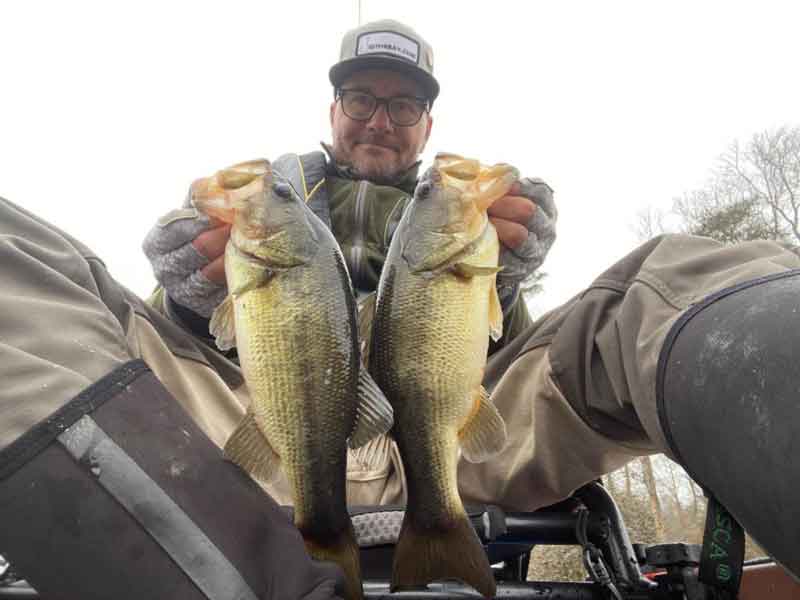I go kayak fishing, a lot. I like the feeling of being down close to the water at eye level, close to the prey that I am hunting. So it goes without saying that over the years I’ve read a lot of articles about fishing and fishing from a kayak. But what I haven’t found, and what I feel is missing, are articles on the subject of observation. That is, keeping your eyes and ears attuned to your surroundings—and how that can help you catch more fish.

Fishing from a kayak is a slower pace of angling, with no motor noise and no rushing from point A to point B. It forces you to slow down. Fishing at this slower pace helps to keep your eyes and ears focused on your surroundings. You might be surprised by how many more fish you may catch as a result.
On a winter day a few years ago, I pulled up to the boat ramp and readied to launch my kayak at Smithville Lake. Looking out over the lake, I noticed a ripple on the water’s surface. I went back to my Jeep and pulled out my spinning rod, which was rigged with a paddle-tail jig. I cast it where I saw the disturbance on the water’s surface, then took a second cast and this time felt the familiar tap on the end of my line. Setting the hook, I landed a 20-inch chain pickerel. A nice start to a great day on the water.
I learned two things from that moment. First, always fish the boat ramp before you launch. Second, always keep your eyes and ears open.
After launching my kayak and as I move along, I scan the shoreline and the open water. I look for turtles and birds such as herons and kingfisher. I take special care to look for them where the wind is blowing against the shore, a point of land, or a fallen tree. If the birds are fishing for small baitfish in a particular area, one can surmise that predator fish may be nearby, too. Also look for the fish-hunting birds where the wind is blowing across a point of land, and where the water is necked down between two points or an island and the shoreline. Here you may find fish facing into the wind-blown movement of the water, waiting for baitfish.
And the turtles, what about them? Well, what I’ve found is if I see a turtle swimming along in a shallow body of water there may be baitfish around because turtles, if they are actively feeding and stirring up the bottom, will attract baitfish that feed on the debris. And where there are baitfish there are predatory fish. Take a cast—you may be surprised.
Early last summer while fishing on St Mary’s lake I noticed a disturbance on the water some distance off. I headed over to investigate. Once there I realized I was seeing baitfish being attacked from below. I grabbed a rod, took a cast, and caught the first of several bass.
Another example: while snakehead fishing on the Blackwater, I always look for a tight group of small bubbles moving along, which sometimes exposes a snakehead fry ball. I’ll cast a Rat-L-Trap or jig past the bubbles, and wait for the pull. If you fish for snakehead it’s a must to be aware at all times, listening and watching for any surface action. These fish make a lot of noise, they attack just about any object on the surface of the water, and they protect their fry with tempers unmatched by other fish. In doing so they expose where they are as if they really don’t care that you know. Here, a kayak more than any other watercraft, is an advantage. Cruise along slowly, listen for them in the shallows, watch for the small bubbles and their swirls as they move right below the water’s surface. When you spot something out of place, take the cast.
A cast not taken is a fish not caught.
-By Eric Packard